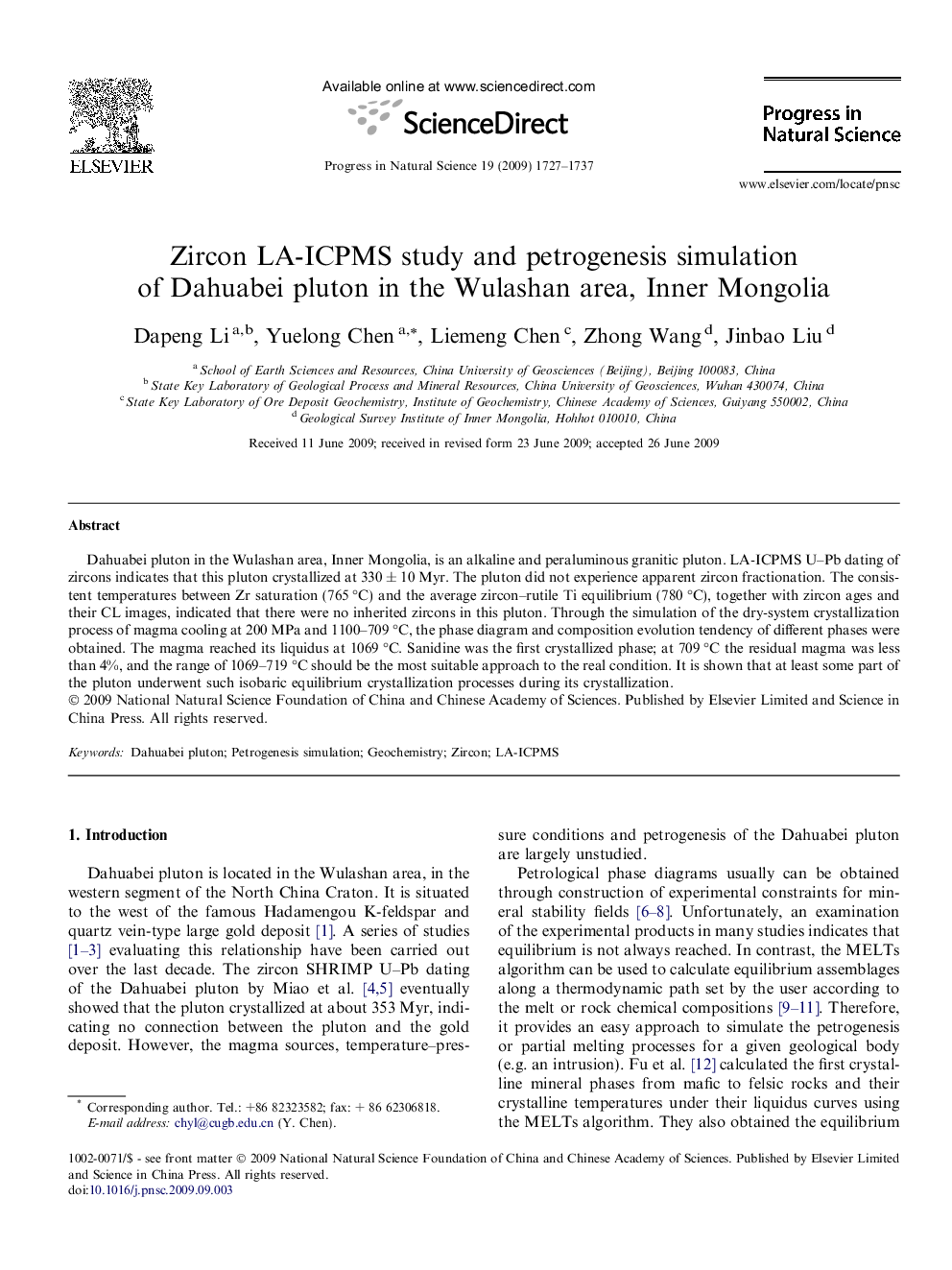| Article ID | Journal | Published Year | Pages | File Type |
|---|---|---|---|---|
| 1548578 | Progress in Natural Science: Materials International | 2009 | 11 Pages |
Dahuabei pluton in the Wulashan area, Inner Mongolia, is an alkaline and peraluminous granitic pluton. LA-ICPMS U–Pb dating of zircons indicates that this pluton crystallized at 330 ± 10 Myr. The pluton did not experience apparent zircon fractionation. The consistent temperatures between Zr saturation (765 °C) and the average zircon–rutile Ti equilibrium (780 °C), together with zircon ages and their CL images, indicated that there were no inherited zircons in this pluton. Through the simulation of the dry-system crystallization process of magma cooling at 200 MPa and 1100–709 °C, the phase diagram and composition evolution tendency of different phases were obtained. The magma reached its liquidus at 1069 °C. Sanidine was the first crystallized phase; at 709 °C the residual magma was less than 4%, and the range of 1069–719 °C should be the most suitable approach to the real condition. It is shown that at least some part of the pluton underwent such isobaric equilibrium crystallization processes during its crystallization.
